Article
Poland 7: 400 Feet Down a Salt Mine; 8,000 Feet Up a Mountain
Author(s):
A road trip through Poland takes travel columnists Eric and Nancy Anderson to a 900-year-old salt mine and the heights of the Tatra Mountains.

Our Insight Vacations road show has started. We are on our way to the ski resort of Zakopane (pronounced Zakopany), a mountain village that rears up to the south almost on the Slovakia border. “Are Slovakian words easier to pronounce than Polish?” shouts a tourist in the front row of the coach. Our tour director, Piotr, pretends not to understand the suggestion Polish is difficult, then goes into his role of Mother Hen with his advice for our trip.
The most important issue seems to be: When you check out of your hotel room, check the room itself. Have you left your passport in the safe, a smart phone charger still stuck in the wall, your toothbrush in the sink?
At one stage in a previous trip, he says, one of his tourists responded to his daily warning by yelling she had left her passport behind.
“Where?” he bellowed.
“Three countries back!” she shouted.
We all laugh. We are clearly good to go.
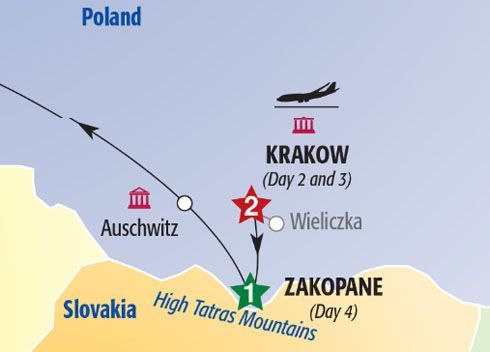
Before our coach climbs into the Tatra Mountains, the highest range in the Carpathians, we are going to stop in a salt mine that has been worked for 900 years. Says a Krakow guidebook: “Common salt was commercially the medieval equivalent of today's oil. Mining salt used to be one of the world's biggest and most profitable industries.” We remember writing for this website about a sea captain on the Gaspe Peninsula who became wealthy in 1783 because he arrived with 400 barrels of salt.
Our mine visit takes about three hours. We know what to expect because there is a lot online about this 900-year-old attraction that in 1978 became a UNESCO World Heritage site. It has 125 miles of tunnels and more than 2,000 underground chambers, but we are pleased to hear our tour visits only 20 of them. One of the websites has three pages of its Frequently Asked Questions that tell us the obvious: there is no smoking, pets are not allowed, and visitors should not lick the 17th century salt sculptures. The FAQs also suggest strollers are not advised as “there are 800 steps.” That shows how preferential it is to take this tour with Insight Vacations. Regular visitors walk down and up a lot of steps; we went to both levels by small elevator which may be available at some times for all.
The 59-degree-Fahrenheit air is said to have a high concentration of calcium and magnesium ions and it’s laden with salt yet no literature suggests it would bother those on a salt restricted diet. After all, many sinus sufferers remark of the benefit they get from sea air.
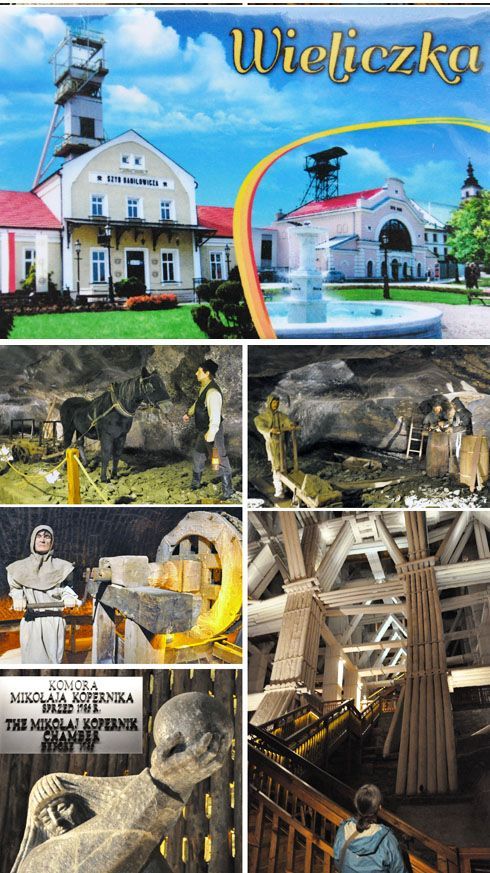
In the 17th century, miners eased the boredom of a shift break by creating figures showing their work. The workers have also portrayed the celebrities who have visited them …
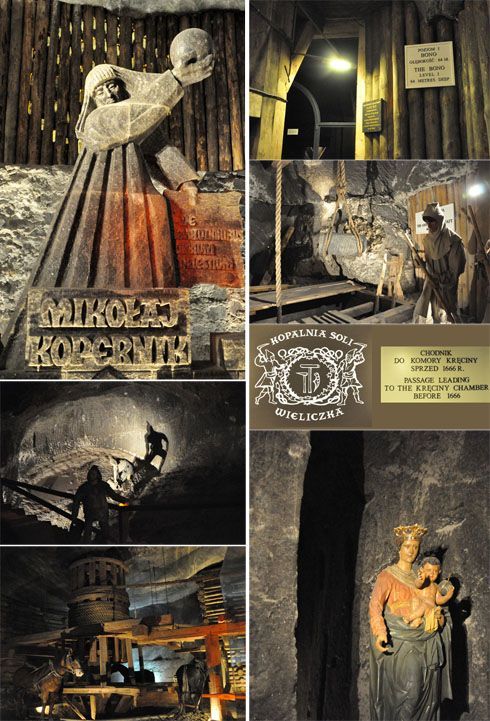
… or the religious source of their pride and nationality
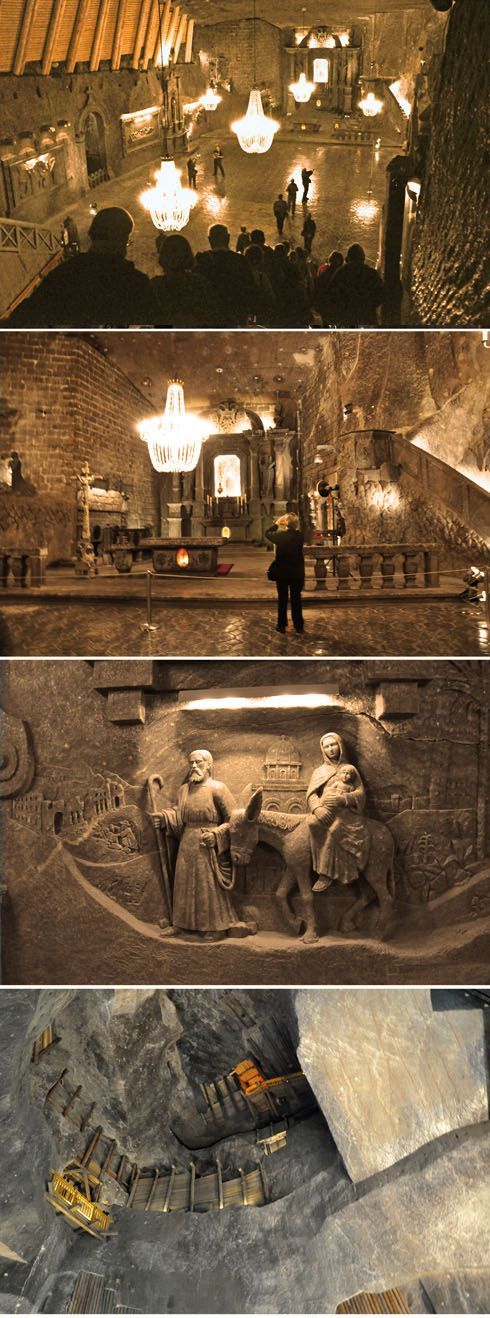
The Chapel of St. Kinga may be the highlight of the tour for many. “Its splendors make it the dreamland location for a Holy Mass, a wedding, a classical or religious music concert for groups of up to 400 people”
As we return to the crust of the Earth we wonder if we feel like scuba divers about to go skiing; we shake off happy memories of our Sheraton Krakow hotel and our time in the former capital of Poland — and as the coach moves off we listen to what Piotr has to say while we head into the mountains.

The mountains, a composite image of the homes, the local tourist guide, our tourist manager with what Insight calls its “flourishes”: unexpected special gestures, here local candy. Our coach outside one of the town’s 20 hotels
A historical document referred to this place in 1578.The people who settled here more than 400 years ago were mostly farmers and sheep herders. But in the 1870s across Europe businesses discovered that health claims for an area could allow development far beyond what the Romans felt clean water achieved to combat illnesses. In the era of pulmonary tuberculosis, clean air offered more high up in any country’s mountains. In 1886, says the Zakopane Travel Guide, Dr.Tytus Chalubinski, a physician who had helped organize the Tatra Mountain Society, “‘discovered’ beneficial features in the climate of Zakopane and provided it with spa status.”
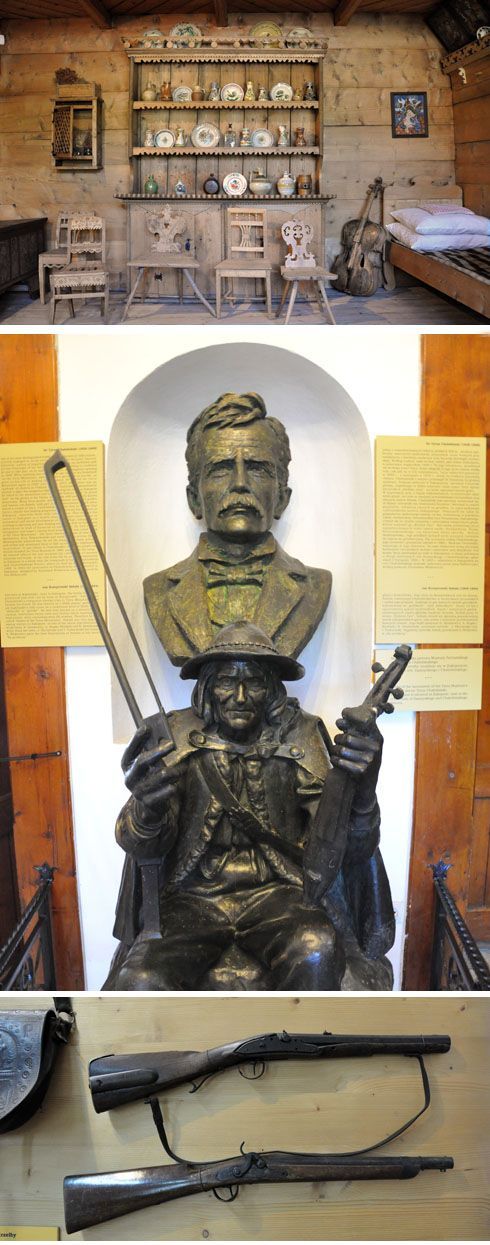
The local museum has exhibits of the hardy pioneer life of the original settlers and pays tribute to Dr. Chalubinski and his longtime companion, Jan Sabała, the famous fiddler and storyteller who often hiked with the doctor in the Tatra Mountains
In many ways wandering around the town of Zacopane is like walking around the villages in the Swiss Alps. You are surrounded now by tourists, steeply roofed wooden homes, sleighs and wagons, quality wood carvings for sale — and even in the cemeteries wood carvings showing who lies buried there.

The little church graveyard here, Peksowy Brzyzek (named for the donor's land where it is located, John PÄ™ksy, and for brzyzek meaning a bluff overlooking a stream) has a throng of quiet visitors walking in its grounds. A service is being conducted as we pass and the hymn follows us as we commune with the town’s history before us in the carved monuments. There are about 500 graves including, says a guide, “250 persons of merit.” We are shown the graves of ski jumpers and priests, and musician and woodcarvers, and writers and blacksmiths. We don’t immediately see any of physicians. Sic transit gloria! We don’t dwell on that when Insight takes us to a dinner later, brightened by local musicians
We will need that music. Tomorrow we go to the horror of Auschwitz.
Photography by the authors
The Andersons, who live in San Diego, are the resident travel & cruise columnists for Physician's Money Digest. Nancy is a former nursing educator, Eric a retired MD. The one-time president of the New Hampshire Academy of Family Physicians, Eric is the only physician in the Society of American Travel Writers. He has also written five books, the last called The Man Who Cried Orange: Stories from a Doctor's Life.




